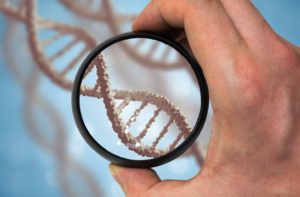Adrenomyeloneuropathy (AMN)
What is adrenomyeloneuropathy?
Adrenomyeloneuropathy (AMN) is a genetic condition that affects the spinal cord and falls under the larger category of adrenoleukodystrophy.
What are the symptoms of adrenomyeloneuropathy?
Symptoms typically begin to present in the late twenties. They include:
- Ataxia
- Hypertonia
- Progressive weakness and stiffness in the legs
- Difficulty walking and changes in gait
- Bladder control issues
- Adrenal insufficiency
- Speech issues
- Sexual dysfunction
- Weight loss
- Nausea
Some affected individuals also see their brains affected, leading to symptoms like seizures, behavioral issues, and hearing and vision loss.
What causes adrenomyeloneuropathy?
A mutated ABCD1 gene results in AMN, and it is inherited in an X-linked pattern. This gene is responsible for the instructions for the adrenoleukodystrophy protein, which helps move very long chain fatty acids into the peroxisomes. Peroxisomes help to break these acids down, so when this protein is lacking, the fatty acids build up and cause characteristic symptoms.
How is adrenomyeloneuropathy diagnosed?
A diagnosis of AMN is often suspected after doctors notice the characteristic symptoms. Doctors will then use a blood test and genetic testing to confirm a diagnosis. After a confirmation, an MRI will be used to see if the brain is involved.
What are the treatments for adrenomyeloneuropathy?
There is no cure for this condition, and treatment is symptomatic. A team of specialists may be required to treat specific symptoms.
Where can I find out more about adrenomyeloneuropathy?
Adrenomyeloneuropathy (AMN) Articles


ICYMI: First Patient is Dosed in Phase 2 Friedreich’s Ataxia Trial

Very First Patient Dosed with Investigational Therapy for Friedreich’s Ataxia in Phase 2 Clinical Trial

The First US Patients Have Been Dosed in a Study of a Drug For AMN







